Two dynamic young women, transplanted in America’s Finest City, are researching the Polish-Jewish Culture and teaching Yiddish here and beyond, through artistic multimedia.
Jana Mazurkiewicz is the driving force to revive Yiddish in San Diego and over the world. Her non-profit organization, the Yiddish Arts and Academics Association of North America (YAAANA), is about to open Yiddishland, an immersive, multigenerational, shtetl-inspired community in San Diego. Since she has taken advantage of Zoom opportunities during COVID-19, her reach is now worldwide, and she has both international teachers and student body. Available to Yiddish and non-Yiddish speakers, Yiddishland will be a living museum for the study of the history of shtetlekh.
“Yiddishland is a concept of an international and intergenerational community where people will have a chance to live a Yiddish life,” Mazurkiewicz said. “It will be a place for adults and children to immerse themselves in Yiddish culture even if they do not speak any Yiddish.”
Ariela Alush, an Israeli filmmaker, was in the middle of her Polish documentary production, when the pandemic cut her shooting work and she had to leave Poland. In her Polish film, Alush has researched the revival of the Jewish-Polish culture, and the 3rd generation of Holocaust survivors’ interest, among other, in Yiddish. While Poland and Israel were locked down, Alush found herself working on a second documentary film in the USA, about post-trauma and resilience in American society.
“San Diego was the warmest and happiest place I have found to keep developing my films,” Alush said. “The reality of a world-wide pandemic add to my quite deep artistic themes could really be depressing for a sensitive filmmaker like me, so I had to protect my soul and find the right environment to work in”.
Like any other Devine interference, the two energetic Jewish blondes with the rich cultural backgrounds and artistic point of view found each other in La Jolla Cove Park and started to share their creative ideas about intergenerational lost and the revival of Jewish-Polish theme.
We sat down with Mazurkiewicz to learn more about her dream of Yiddishland and how it transpired.
L’CHAIM: Where were you born? Did you grow up speaking Yiddish?
Jana Mazurkiewicz: I am from Kielce (in Poland. I grew up during the end of Communism, a time that Yiddish was not popular or even known in Poland. So no, I did not grow up speaking the language. But as a child I remember my parents listened to Yiddish music and we went to Yiddish theater quite frequently. Kielce is a city that was surrounded by many shtetls, so we traveled there often, and this was my first exposure to shtetl architecture and landscape.
L’CHAIM: Was there a Yiddish culture in Kielce?
JM: Most people might have heard about my city because the last pogrom in history took place there in 1946. When I was growing up there, there was not much left of its previously vibrant Jewish community. There were no regular Yiddish classes in other cities either. After the fall of Communism, when Poland entered the European Union, I had a chance to study Yiddish abroad. In the 2000s, the biggest Yiddish summer courses were organized in Vilna, Paris, Brussels, and other European cities. Many young people traveled there to learn more about their own Yiddish roots through learning the language of their ancestors. These very intensive courses helped me eventually become a fluent Yiddish speaker.
L’CHAIM: What is your formal education and what are you working on in your research?
JM: I have an M.A. in Polish Philology, Jewish Studies, and Rhetoric from the University of Wroclaw, Poland. I am now finishing up my PhD in the Slavic Department of the University of Michigan, Ann Arbor. I am working remotely on a dissertation about the role of the Communist system in preserving the Yiddish Theater of Warsaw, an institution that still promotes Yiddish theater in Poland.
L’CHAIM: What does Yiddish mean to you?
JM: Yiddish is a language without borders! Wherever you go, you can find Yiddish speakers. If you decide to learn Yiddish, you immediately become a part of that international community. The revival of Yiddish, paradoxically, became even stronger during the pandemic through Zoom classes and events. Last year, I reconnected with my Yiddish speaking friends all over the world, and some of them got very heavily involved in the activities of our organization.
L’CHAIM: Why did you choose San Diego to launch Yiddishland?
JM: San Diego is a great place for hosting an organization promoting the Yiddish language and culture because of its diverse Yiddish-speaking community consisting of Yiddish speakers who have immigrated from Mexico, Russia, South Africa, NYC, and many other places. We are also an international destination for tourism and our great weather is helpful in getting people together all year round. Our Yiddishland project will merge non-profit work with tourism, and I cannot imagine a better location for it than San Diego County!
L’CHAIM: Tell us about YAAANA, and what it means to you.
JM: YAAANA (www.yaaana.org) is a non-profit organization created to further the study of the Yiddish language and culture for anyone with interest in any level of Yiddish. This organization helps people to learn not only the language but also other forms of cultural expression, including theater, music, and food. Everybody is welcome! We recently opened additional chapters including a Yiddish translation agency (https://yaaana.org/yiddish-translation-services), a Yiddish theater academy (https://yiddishtheateracademy.org), and a Yiddishland project (https://yiddishlandcalifornia.org). We are currently working on developing a website for our newest baby, Polish-Jewish Dialogue Center.
To exhibit our rich collection of Judaica and further educate the public, we are now in the process of fundraising for a physical location in La Jolla. Our first exhibit will feature the artwork of Seymour Rosenthal (1921–2007). Ideally, we would open in September of 2021 and launch in-person operations such as classes, performances, concerts, exhibits, and an afterschool Yiddish program. If you wish to contribute to that cause, please text the code “mameloshn” to 44-321, and help us “Yiddishize” San Diego County.
The Journey of Film
Ariela Alush was born in Ramat Gan, Israel. Her parents spoke French so the children would not understand, but her Greek grandma talked with her Ladino, which for her was the language of true love. Living next to Bney Brak, young Ariela was hearing Yiddish from her Orthodox Haredic neighbors and was frustrated she couldn’t understand a word. Her multi-linguistic father thought her some sayings in Yiddish, but it wasn’t enough for her curiosity among this strange language speakers.
From childhood, Alush was writing poems, singing, painting, and used to be on stages telling the stories that her wide imagination showed her.
In her IDF service, she was assigned as a strategic planning officer in the Computers Unit of Mamram. After her service she worked as a training specialist in a high-tech company, teaching organizations how to use their ERP software, and teaching the programmers the specific needs of their customers.
After a few years in that field, she decided to develop her love to the media and started studying for a degree in Communication and Management at Colmann college in Tel Aviv. Being elected as the faculty Head of Students Association, her time was full of creative thinking, in finding solutions to students’ issues, mediating between their voice and the college staff, and producing social events in holidays and special memorial days. After finishing her B.A., excelling in her directing TV and commercial storytelling classes, she started working as a content manager and screenwriter in the Educational Television Channel, in several children’s shows.
In 2004, her life changed drastically when, on a vacation with two of her friends in the Sinai Peninsula, a terrorist attack killed one of her friends and seriously injured Alush. An explosion cracked her skull, broke her right hand, and tore her eardrum, but doctors said Alush had “optimistic cells,” and her recovery was better than they ever imagined. After rehabilitation and going back to working in TV production in different roles, Alush understood that there was a higher cause to her staying alive, almost losing her eyesight and her ability to hear. So, she started in the MFA program at the Tisch school for Film & Television in Tel Aviv.
There, she made short films about multi layered conflicts and people who lived their lives like true heroes. Her documentary film, Copy Brad Pitt (in Hebrew “Brosh Levado”), tells the story of a young screenwriter with cerebral palsy. It was broadcast on the Yes-Docu channel in Israel for several years and won Best Jewish Film at the Girona Film Festival. Presenting the film at various film festivals brought Alush to Poland in 2018, where she was invited to Warsaw and Krakow to screen her film and speak about her own personal story of being an Israeli, a Jew, and a terror victim who struggled to succeed as an independent filmmaker. Through meetings with today’s Polish youth, Miss Alush realized how complicated is the reality of the Polish-Jews were after 30 years of independent lives without the soviet antisemitic roles, and she started her research about the current relations between non-Jews and the Jewish culture that existed before the Holocaust.
“I was amazed to find that so many young Poles are attracted to the Jewish culture despite having no Jewish roots, but as a ‘good Jew’ who was raised on the horror stories of Nazi-Polish collaboration during World War II, I was immediately suspicious about their intentions, and that suspect led me to find their complicated truth,” Alush said.
Just like Mazurkiewicz in San Diego, Alush met a lot of characters during her research in Poland, and their passion to revive the “Shtetl” culture started either in one of the most identifying cultural elements: the Yiddish language, the holiday customs, and the Polish-Jewish food.
One of the most interesting people that filmmaker Alush met in her cinematic research is the former Austrian-German author, Uve Von Seltmann and his wife, the theatre director Gabi Von Seltmann, who are both artists that put their social goals to preserve the ancient Jewish culture, by the fringe theatre shows that Gabi is presenting with her ensemble, and the books that Uve is writing, in Yiddish, about the forgotten Jewish heroes were living in the times of between the wars.
During the pandemic, this Jewish-Polish relations film stopped its production, but Alush managed to edit a short film of one of her characters, called Lucky Daniella. This film tells the story of a young Israeli artist that, while studying in Krakow and researching her ancestors’ graves, finds a shocking truth about the “Lucky Jew” image in today’s Poland.
Like these Jewish artists, and Like Mazurkiewicz who dreams to build “Yiddishland”, Alush also believes that art – in her case the art of filmmaking – can change people’s perspective to the reality they live in and give them new strengths overcoming daily obstacles by connecting to their cultural roots.
Despite the pandemic and the closed borders in Europe, Alush continues her research, and funds search for this important Polish-Jewish film, while working on another documentary film in the US about post-trauma and the ability to gain resilience between different generations and different cultural roots.
Lucky for us, we have two talented and extremely creative women to teach us more about our Ashkenazi cultural roots through theatre and cinema.

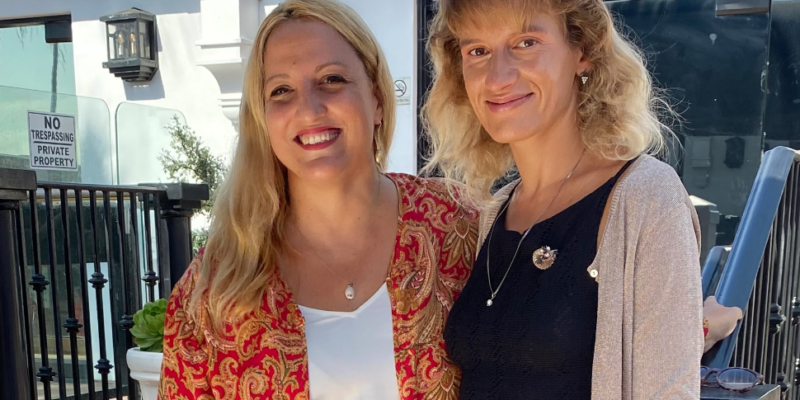
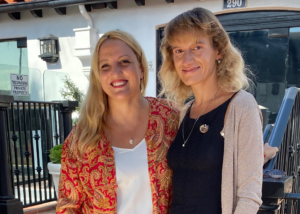

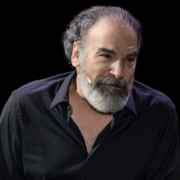

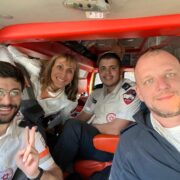
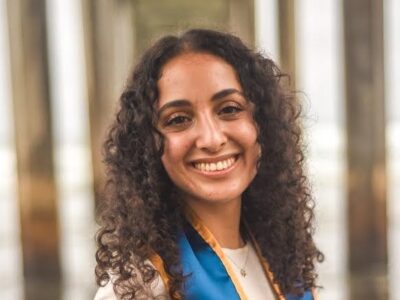

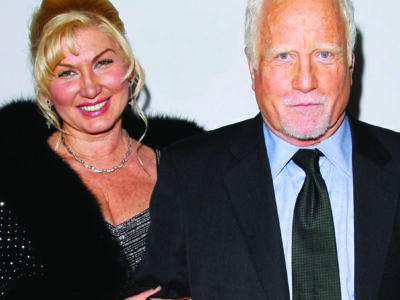
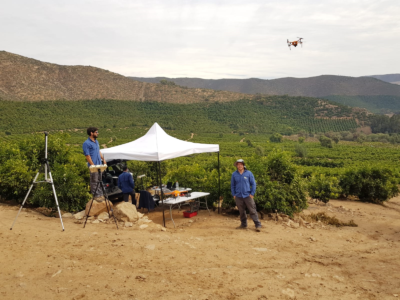
Hello, you desired one! My name is Jacob (Yankev) Szczupak, a former teacher of Yiddish in Legnica, Poland, at the existing ’till 1968 Yiddish Elementary and High School. Since 1971 I was teaching Yiddish, primarily part-time, at my present city Atlanta, at Emory University, Jewish schools and synagogues evening courses
I am now retired, but eager to continue to be active in continue to spread and enruch my Yiddish.
I was wondering if the revival of Idisch in Poland today is with the Beutiful Poileshe Idish, specially the Warshever Iddisch or the accent is more Litvish